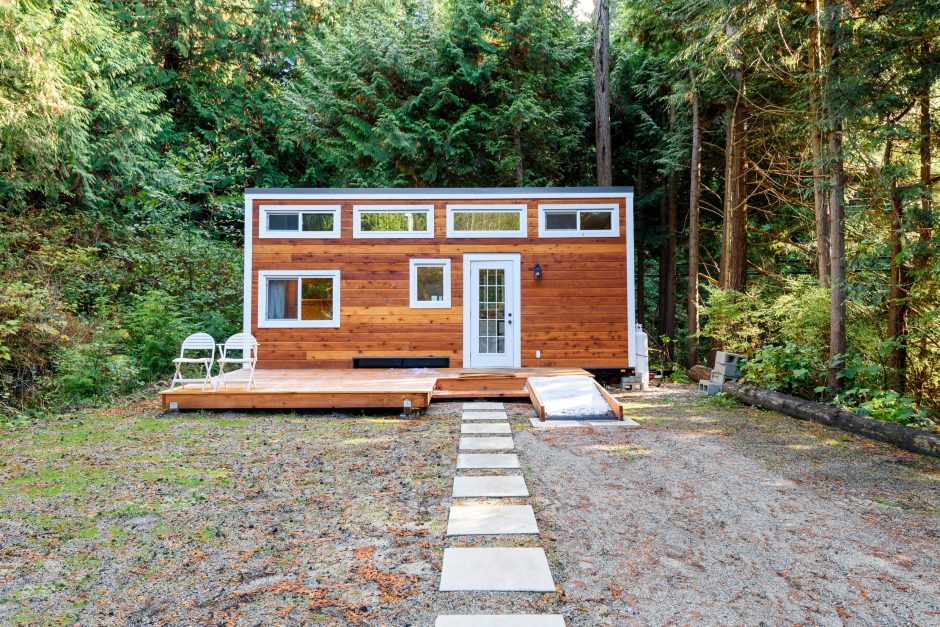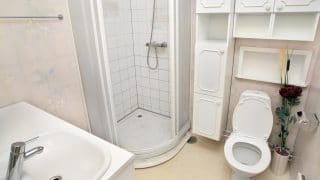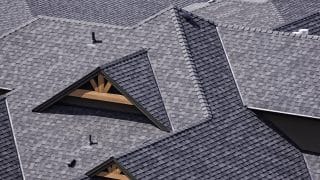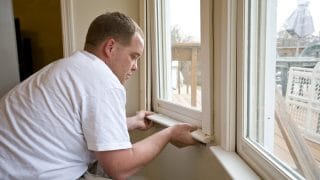
Tiny homes have gone from quirky living space to an entire social movement for people in search of a simpler lifestyle and living with less—including less square footage. The tiny house movement is about downsizing the space you live in, but it’s also about embodying a philosophy of “less is more” and embracing the freedom that goes along with it.
What is a tiny house?
A tiny house is pretty much what it sounds like—a very small home. A tiny house typically has no more than 400 square feet, and frequently less than that. Tiny homes usually have a kitchen, living area, bathroom, and loft bed (the loft area isn’t generally included in the total square footage of the house).
To put how tiny these homes really are into perspective, the average American home has around 2598 square feet, while the average tiny home is around 100 to 400 square feet. In other words, the standard American home is over 6x bigger than a tiny home. Think about it like this, if you’re in need of a visual: The typical tiny house could fit about nine king-size beds in it, and nothing else.
Tiny homes can allow people to get away from the costly expense of living in large homes and reduce the amount of physical “stuff” in their lives. Tiny homes are also frequently built on wheels, or have the ability to be transported elsewhere, making the house type attractive to those who prefer a more nomadic lifestyle.
Where can I put my tiny house?
One of the biggest obstacles to building a tiny home is finding a place to put the actual house. Here are the options:
- On a foundation. You can build a tiny home on a foundation, similar to how you would build a traditional house—but, obviously, smaller. Keep in mind, however, that while many states accommodate tiny home construction, some municipalities don’t allow homes built on a foundation that are under a certain square footage. Laws and codes can change from city to city, so builders must do their research before choosing a place to put a tiny house if they want it on a foundation. If you do choose to build your tiny home on a foundation, you’ve got options: a slab foundation made out of concrete (best for areas close to water), a crawlspace foundation (best for areas where the soil is more clay-like), or a basement foundation (underground and much more costly). You can also choose to make your foundation “semi-permanent,” and build it on wooden piers—this option is great for anyone who might want to move their tiny house at some point in the future.
- As an additional dwelling unit (ADU). An ADU is an additional structure built on a permanent residence or single-family plot. In order for a tiny home to qualify as an ADU, it must be built on a permanent foundation. It also must meet all local building codes and zoning regulations, which vary across state (and even city) lines. Before choosing this option, check to make sure you’re complying with local laws.
- In a tiny home park. There are many tiny home communities around the country made up of tiny houses built on a foundation, as well as ones meant for tiny homes on wheels. Check with the specific tiny home park for its individual regulations, as they vary from place to place. Similar to tiny home communities, you may also choose to put your tiny house in a mobile home park, but this can be difficult as you will need to follow all local building codes and get permission from the manager of the park.
- On wheels. Since state and city laws can get in the way of building a tiny house on a foundation, many tiny house owners choose to build their tiny house on wheels. In fact, most tiny homes are built on trailer platforms. This, however, comes with its own set of regulations. For example, you can’t just park your tiny house anywhere. It’s also important to register your tiny home as an RV if you plan to travel with it. RV parks are excellent places to park your tiny house, but they all have different restrictions so be sure to check with them first. This option is usually short-term used by people who live on the road. Many people also temporarily park in backyards or driveways of family and friends, but obviously must have the permission of whoever owns the house. You’ll also need to have the right equipment and tools to tow your tiny house—your Honda Civic probably won’t be able to move an entire house no matter how tiny it is. Be sure to check local regulations regarding the size of the tow trailer, as well.
How did the tiny house movement start?
Jay Shafer is largely credited with starting the tiny house movement back in 1999, when he published an article about the benefits of simpler living. That same year he built his first tiny home in Iowa. It was 110 square feet, and Shafer lived there for five years. Later that year he founded the Tumbleweed Tiny House Company in Sonoma, California, which was the first company to sell mobile tiny houses in the United States.
Tiny homes have gone from quirky living space to an entire social movement for people in search of a simpler lifestyle and living with less—including less square footage. The tiny house movement is about downsizing the space you live in, but it’s also about embodying a philosophy of “less is more” and embracing the freedom that goes along with it.
What is a tiny house?
A tiny house is pretty much what it sounds like—a very small home. A tiny house typically has no more than 400 square feet, and frequently less than that. Tiny homes usually have a kitchen, living area, bathroom, and loft bed (the loft area isn’t generally included in the total square footage of the house).
To put how tiny these homes really are into perspective, the average American home has around 2598 square feet, while the average tiny home is around 100 to 400 square feet. In other words, the standard American home is over 6x bigger than a tiny home. Think about it like this, if you’re in need of a visual: The typical tiny house could fit about nine king-size beds in it, and nothing else.
Tiny homes can allow people to get away from the costly expense of living in large homes and reduce the amount of physical “stuff” in their lives. Tiny homes are also frequently built on wheels, or have the ability to be transported elsewhere, making the house type attractive to those who prefer a more nomadic lifestyle.
Where can I put my tiny house?
One of the biggest obstacles to building a tiny home is finding a place to put the actual house. Here are the options:
- On a foundation. You can build a tiny home on a foundation, similar to how you would build a traditional house—but, obviously, smaller. Keep in mind, however, that while many states accommodate tiny home construction, some municipalities don’t allow homes built on a foundation that are under a certain square footage. Laws and codes can change from city to city, so builders must do their research before choosing a place to put a tiny house if they want it on a foundation. If you do choose to build your tiny home on a foundation, you’ve got options: a slab foundation made out of concrete (best for areas close to water), a crawlspace foundation (best for areas where the soil is more clay-like), or a basement foundation (underground and much more costly). You can also choose to make your foundation “semi-permanent,” and build it on wooden piers—this option is great for anyone who might want to move their tiny house at some point in the future.
- As an additional dwelling unit (ADU). An ADU is an additional structure built on a permanent residence or single-family plot. In order for a tiny home to qualify as an ADU, it must be built on a permanent foundation. It also must meet all local building codes and zoning regulations, which vary across state (and even city) lines. Before choosing this option, check to make sure you’re complying with local laws.
- In a tiny home park. There are many tiny home communities around the country made up of tiny houses built on a foundation, as well as ones meant for tiny homes on wheels. Check with the specific tiny home park for its individual regulations, as they vary from place to place. Similar to tiny home communities, you may also choose to put your tiny house in a mobile home park, but this can be difficult as you will need to follow all local building codes and get permission from the manager of the park.
- On wheels. Since state and city laws can get in the way of building a tiny house on a foundation, many tiny house owners choose to build their tiny house on wheels. In fact, most tiny homes are built on trailer platforms. This, however, comes with its own set of regulations. For example, you can’t just park your tiny house anywhere. It’s also important to register your tiny home as an RV if you plan to travel with it. RV parks are excellent places to park your tiny house, but they all have different restrictions so be sure to check with them first. This option is usually short-term used by people who live on the road. Many people also temporarily park in backyards or driveways of family and friends, but obviously must have the permission of whoever owns the house. You’ll also need to have the right equipment and tools to tow your tiny house—your Honda Civic probably won’t be able to move an entire house no matter how tiny it is. Be sure to check local regulations regarding the size of the tow trailer, as well.
How did the tiny house movement start?
Jay Shafer is largely credited with starting the tiny house movement back in 1999, when he published an article about the benefits of simpler living. That same year he built his first tiny home in Iowa. It was 110 square feet, and Shafer lived there for five years. Later that year he founded the Tumbleweed Tiny House Company in Sonoma, California, which was the first company to sell mobile tiny houses in the United States.
The recent growth in popularity in tiny home living roughly correlates to the 2008 housing crisis and the need for more affordable housing. Since then, the tiny house movement has only grown as indicated by a 2020 poll taken by a Fidelity National Financial subsidiary showing that 56% of Americans polled said they would consider living in a tiny house with affordability as the leading factor in the appeal.
What are the benefits of living in a tiny house?
Tiny life comes with a whole lot of benefits, with cost as a huge factor.
- Cost. Plus, tiny homes cost exponentially less to build than average-sized homes so you’re saving a lot of money right from the start. They’ve been built for as little as $15,000, but can climb up to $100,000, which is still less than the median price for an average-sized home ($389,400 as of 2020). Living in a tiny house saves money by cutting back on overall housing expenses, as there’s generally less maintenance, simply because there is less to maintain. You’ll be cleaning less, using less, and, therefore, spending less.
- Downsizing. For a lot of people, downsizing is all about making life simpler, in addition to the financial benefits. When there’s less space, there’s less stuff, which can be freeing to those who wish to commit to a more minimalistic way of life. Tiny home living is about quality over quantity, and with downsizing comes decluttering. It also means less of everything, including resources used.
- Energy-efficient. Tiny homes are typically more energy-efficient than regular homes, with lower bills all around. This is because they don’t use as much energy to power or heat. Many tiny homes include a compost toilet, which means it doesn’t need to be hooked up to a sewage system to break down waste. They are also more environmentally friendly and have a lower carbon footprint than a “typical” home, since they are built using less material and use less energy. Tiny homes can be much more self-sustaining, depending on if they are built with this in mind, with the use of solar panels, batteries, alcohol stoves, and reclaimed water.
- Mobility. There’s a freedom that accompanies living in a tiny home on wheels. One of the biggest benefits is that you can take your home on the road whenever you feel like it, travel, and live from place to place while still being in the comfort of your own home. Plus, having a mobile tiny home gets you around city building codes and zoning laws that foundational homes (including tiny ones) must adhere to. You’re never stuck in one place in a tiny home on wheels—you’re free to move around and bring your whole house with you wherever you choose to go.
MT Copeland offers video-based online classes that give you a foundation in construction fundamentals with real-world applications, like how house framing works. Classes include professionally produced videos taught by practicing craftspeople, and supplementary downloads like quizzes, blueprints, and other materials to help you maste







